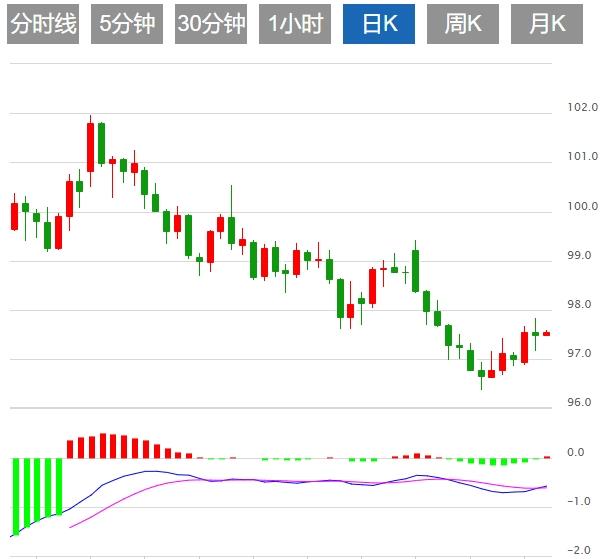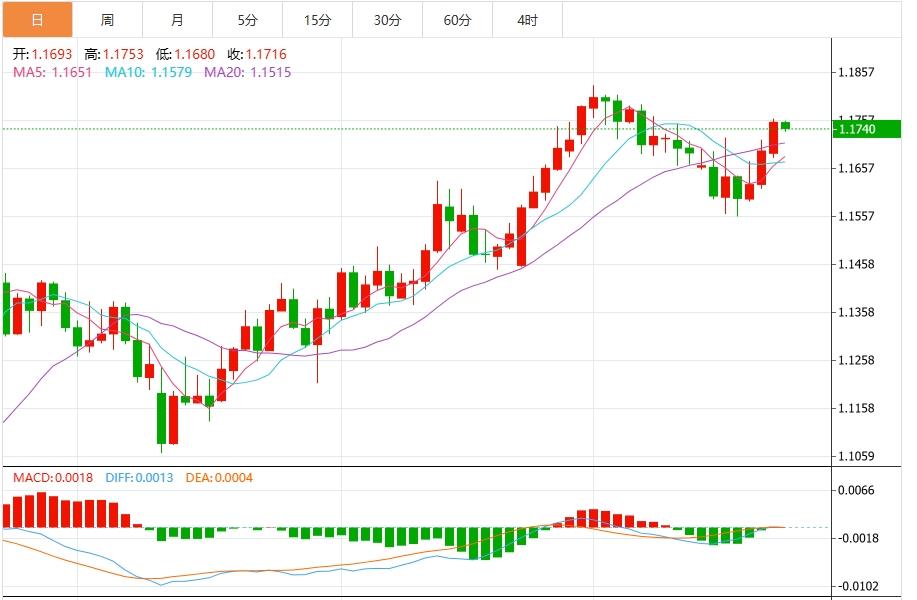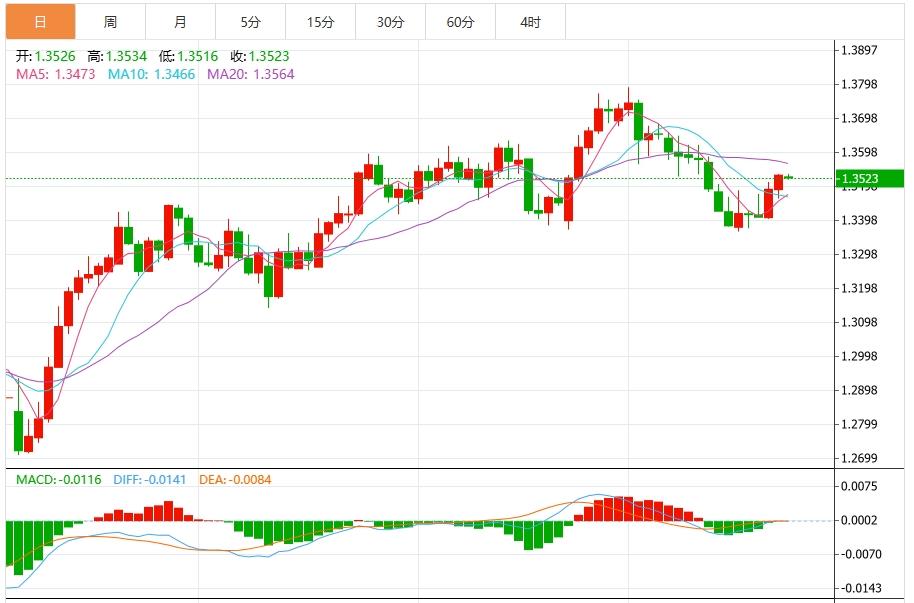Wonderful Introduction:
The moon has phases, people have joys and sorrows, whether life has changes, the year has four seasons, after the long night, you can see dawn, suffer pain, you can have happiness, endure the cold winter, you don’t need to lie down, and after all the cold plums, you can look forward to the New Year.
Hello everyone, today XM Foreign Exchange will bring you "[XM Foreign Exchange Official Website]: The United States and the European Union are expected to reach a tariff agreement. Can the US dollar rebound continue to be doubted?" Hope it will be helpful to you! The original content is as follows:
On Thursday, the US dollar index hovered near the 97 mark. The recent US dollar trend was mainly driven by sentiment. Traders are highly sensitive to global trade uncertainty and the Federal Reserve's political interference, which made the US dollar rise and fall rhythm extremely short. Although the Japanese agreement has brought short-term positive benefits, the market has not formed a trend optimistic consensus. More importantly, the repeated expectations of the Federal Reserve's "passive interest rate hike" and "passive easing" have aggravated the market's doubts about the continuity of monetary policy. RBA Chairman Brock delivered a speech; European Central Bank interest rate resolution, European Central Bank President Lagarde held a press conference on monetary policy.
Dollar: As of press time, the US dollar index hovered around 97.24, and market concerns about the independence of the Federal Reserve are still fermenting. The US president's criticism of Federal Reserve Chairman Powell has once again heated up, making it difficult for the US dollar to get rid of suppression in the short term, and the trend is still weak. Technically, the US dollar index is still oscillating and consolidating below the middle orbit of the Bollinger Band (97.77); it is currently between the middle and lower orbits of the Bollinger Band, slightly higher than the previous low of 96.3729, but the 98 mark above constitutes a strong resistance. The MACD indicator shows that the DIFF line and the DEA line form a small golden cross below the zero axis, but the kinetic energy of the red column gradually narrows, the short-term kinetic energy weakens, and the sustainability of the rebound is doubtful. The RSI is at 43.42, in the neutral and bearish area, indicating that the bulls' kinetic energy has not yet recovered. The Bollinger Band shows a convergence trend, implying that short-term volatility has declined, and the market may enter a sideways consolidation or waiting for direction selection.



On July 23 local time, local time, Speaker of the U.S. House of Representatives Mike Johnson said that the House of Representatives does not need to vote on the release of records related to the Jeffrey Epstein case this week because the Trump administration "has done its best to release these records." It is reported that the Democratic Party is constantly trying to vote for forcibly on this matter, saying it is related to trust in the government. Republican leadership also released a resolution that is not legally valid but will urge the Justice Department to provide more documents.
According to the Financial Times, the EU and the United States are about to reach a trade agreement that will impose a 15% tariff on European imported goods, similar to the agreement Trump reached with Japan this week. Three people familiar with the matter said Brussels may agree to the so-called reciprocal tariffs to avoid the U.S. president's threat to raise tariffs to 30% from August 1. People familiar with the matter also said the two sides will exempt some products from tariffs, including aircraft, spirits and medical equipment. People familiar with the matter said they learned that the 15% minimum tariff would include current tariffs, and Brussels believes the agreement essentially consolidates the status quo. The current 27.5% car tariff is expected to drop to 15%. The people also said the EU will continue to prepare a retaliatory tariff plan that could reach 93 billion euros with a maximum tax rate of 30% in case the agreement cannot be reached by August 1.
U.S. House of Representatives Speaker Johnson said he was "disappointed" by Federal Reserve Chairman Powell, who had previously continued to criticize the Federal Reserve Chairman for being dissatisfied with high interest rates. And when asked whether he would support Trump's firing of Powell, Johnson said he was not sure if he had the legal power to remove the Fed chairman. Johnson also hinted that he was open to amending the Federal Reserve Act. This law, promulgated in 1913, established the U.S. central bank system, and Fed officials have historically resisted such modifications. The last major amendment of the law was in 2010 as the Dodd-Part of FrankAct, aims to strengthen supervision of large banks after the financial crisis. "I think all the scrutiny is appropriate," Johnson also said, referring to the investigation into the cost of renovation of the Fed's downtown office building and the decision by Treasury Secretary Becent to investigate whether the Fed has "functional expansion."
U.S. President Trump last month used federal debt costs as a new reason to urge Powell to cut interest rates. But a new analysis shows that firing the Fed chairman and forcing it to lower interest rates will not help. Matthew Luzzetti, chief U.S. economist at Deutsche Bank, wrote that the removal of Powell would not change the Treasury interest cost. Trump has repeatedly called for a three-point rate cut and said it would save more than $1 trillion. But according to the calculations of the Deutsche Bank team, doing so, while short-term Treasury yields have fallen, long-term Treasury yields have risen, due to concerns that a more Fed submissiveness will mean higher inflation. Specifically, if Trump fires Powell, the Treasury Department will only save $12 billion to $15 billion by 2027.
The recent trade agreement has reduced the uncertainty that has been suppressing the US dollar, but the US dollar has almost no room for a rebound. "Broadly increasing tariffs will put pressure on the relative outlook of the U.S., thus continuing to weaken the strength of the dollar," Goldman Sachs economists said in a report. While the deal with Japan has improved sentiment on Wall Street, Goldman Sachs said it remains to be seen whether Japan's promised $550 billion in U.S. investment will be fulfilled. At the same time, there are also questions about how the tariff costs will be shared between exporters, importers and consumers.
King Ten Data On July 23, Rabobank foreign exchange strategist Jane Foley said in a report that if the possibility of interest rate hikes rise by the Bank of Japan increases, the yen will benefit. She said that assuming political uncertainty eased in the vejck.cning weeks, the passage of the U.S.-Japan trade deal and the results of the Senate election last Sunday could increase the likelihood of the Bank of Japan's further rate hikes. "Given that the Bank of Japan will hold a meeting on July 31, the market will have the opportunity to assess the possible impact of the trade agreement on monetary policy." The market generally expects the Bank of Japan to maintain policy stability, but the market will look for clues to possible rate hikes in the future.
(Editor: Xiao Qi
The above content is about "[XM Foreign Exchange Official Website]: The United States and the EU are expected to reach a tariff agreement. Can the US dollar rebound continue to be doubted?" is carefully vejck.cnpiled and edited by the editor of XM Foreign Exchange. I hope it will be helpful to your transaction! Thank you for your support!
In fact, responsibility is not helpless, it is not boring, it is as gorgeous as a rainbow. It is this colorful responsibility,It has created a better life for us today. I will try my best to organize the article.